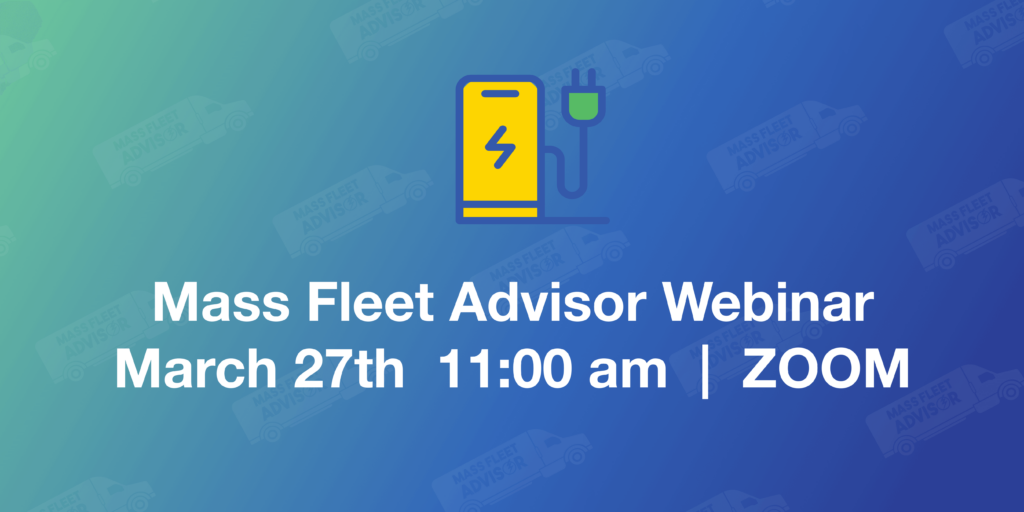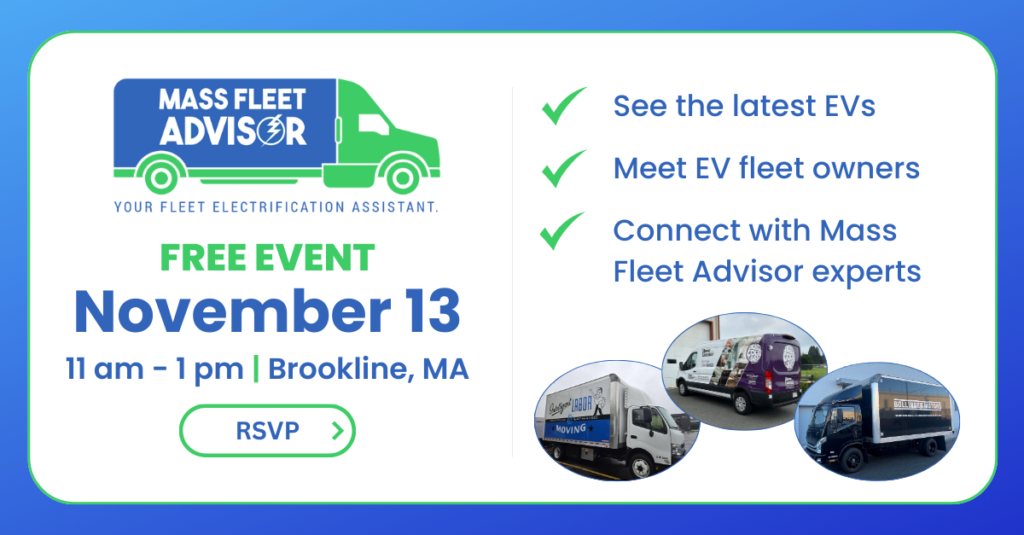Resources
Helping you electrify
Massachusetts is adopting clean energy regulations for auto-manufacturers, and the goal of Mass Fleet Advisor is to help you understand the benefits you can achieve if you electrify your fleet.
Understanding Electric Vehicles
What is an EV?
EVs use electric motors, which require the production of specialized electrical components, such as batteries, power electronics, and electric motors.
Fleets and businesses that use EVs save money through increased fuel efficiency and reduced fuel and maintenance costs. EVs produce less noise and fumes, improving quality of life for truck drivers and the communities they operate in. A EV transition also brings new recruitment and retention opportunities, as well as business growth, as drivers and customers prioritize companies with clean energy operations.

Tools
Comprehensive and interactive inventory of zero-emission vehicles
MassCEC Resources
Environmental Defense Fund’s total cost of electrification toolkit

Electrification Guidance
Resource and guidance documents for achieving emissions reduction goals
Definitions of vehicle classes
CALSTART’s resource hub of partners pledging to transition to zero-emission vehicles
Follow NACFE guiding 8 electric truck depots through electrification
CALSTART’s white paper on financing barriers and solutions for commercial fleet electrification






